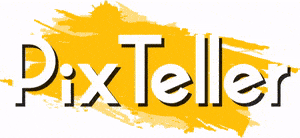Your Guide to Starting a Photography Career

Photographers master the art of transforming even an ordinary view into a breathtaking picture. However, turning this hobby into a lucrative career and business takes more than snapping beautiful images. In addition to having the skills (and continually honing them), you need some business know-how, a proper marketing approach, and a way to outdo the competitors. After all, the availability of more affordable equipment and learning resources has given anyone the chance to explore this creative endeavor.
So, let’s see how to take the first steps from a casual photographer to a professional artist, booking clients, and getting paid.
Establish your style and niche

First things first, all photographers have their unique style, from the actual photography angles to editing. You want potential clients to visit your website or social media account and immediately know what pictures they can expect.
Besides the final product (how pictures look), you can also establish yourself as an event photographer, one who specializes in weddings. In other cases, your target clients are the ones ordering photoshoots, be it solo or group ones. Photography can also complement your other interests, such as a passion for photoshoots in natural settings.
Take care of the legal requirements

Another step in starting a photography career is registering your business. The exact requirements may vary depending on your country of residence. Additionally, we recommend booking consultations with specialists who can guide first-time business owners. Then, you can avoid mistakes and explore tax-saving options applicable to you.
Financially stable during a career change

Initially, you may keep photography as a side hustle, waiting to build your client base and become comfortable with your earnings. If you are quitting your job, you’ll need some substantial savings to stay afloat.
During this time, you can also engage in other, less stressful activities to make money. For example, microtasking won’t take up too much of your time, but it will allow you to add new funds to your savings. JumpTask is one of the available services that pays users for performing various assignments.
Additionally, consider generating passive income by selling your former work on stock image platforms.
Showcase your portfolio and create a brand identity

One of the biggest tasks for photographers is to showcase their work as examples for potential clients. Social media works very well in capturing people’s attention. However, you should also manage a personal website that also includes your brand logos and pricing. It also should include your contacts and other general information.
Establish trust with clients

Once you start booking clients, it’s essential to establish trust with them. Therefore, prepare transparent and straightforward contracts that protect you and them. For example, the contracts should outline accepted payments and their deadlines, as well as lay out conditions and penalties for no-shows or last-minute cancellations.
Additionally, you can negotiate the rights you have to use the pictures on your social media platform or in your portfolio. After all, some clients prefer keeping their photos private.
Establishing trust also means protecting these images and securing clients’ personal information. For this, you can use password managers to safeguard your accounts and utilize data removal services in case you would like some content to be permanently deleted from the digital space.
Final Thoughts:
Becoming a professional photographer requires skills and involves understanding the market, competitors, and clients’ expectations. Besides that, it’s all about showcasing your work through social media to attract potential clients. The business know-how includes registering your business, setting appropriate prices, and preparing fair contracts. The latter should not only protect your business but also your clients, to foster mutual benefit. Lastly, protect your clients’ photos, especially if they are of a more risque nature or the client simply prefers to keep them private.
Until next time, Be creative! - Pix'sTory



